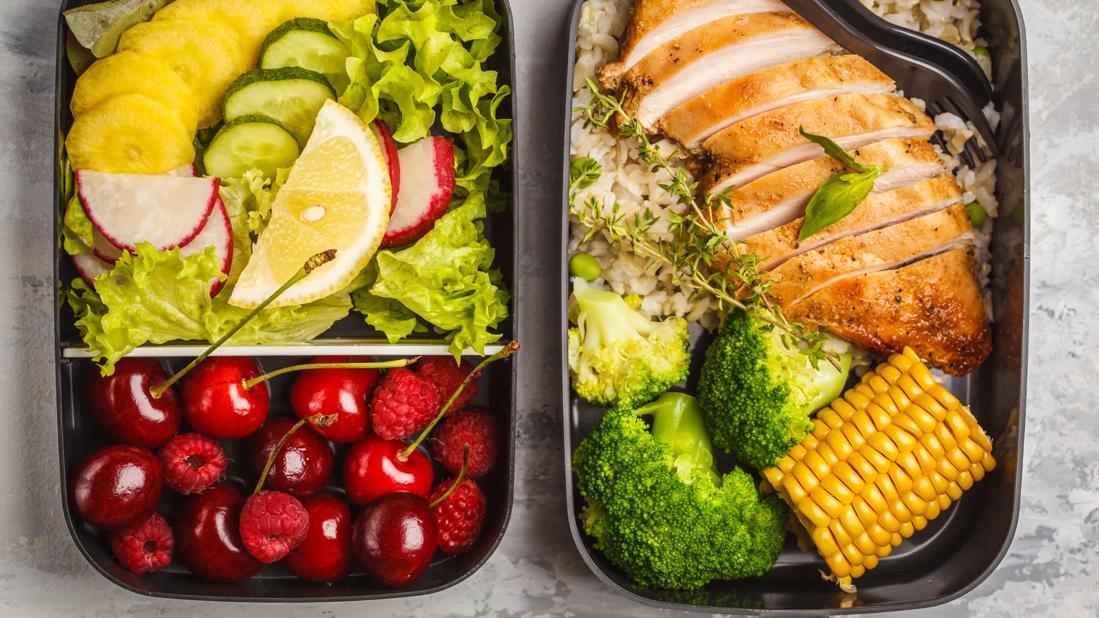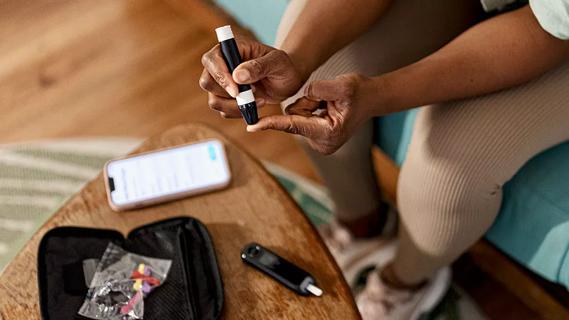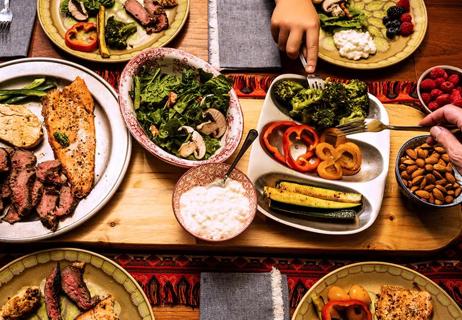Use the ‘plate method’ to create a meal with non-starchy vegetables, lean proteins and carbs

When you have Type 2 diabetes, it’s important to manage your blood sugar levels. And factors like what you eat, when you eat and how much you eat can all play a role.
Advertisement
Cleveland Clinic is a non-profit academic medical center. Advertising on our site helps support our mission. We do not endorse non-Cleveland Clinic products or services. Policy
Eating a well-balanced diet is key. And having a Type 2 diabetes meal plan that’s easy to follow can help you create healthy, tasty options.
“Meal planning is great for making sure that you have healthy options that will keep your blood sugar better under control,” says registered dietitian and diabetes educator Emma Rueth, RD, LD, CDCES.
Rueth says she likes to use the American Diabetes Association’s Plate Method when creating a meal plan for Type 2 diabetes.
“You can literally use your plate as a means of portion control,” she notes. “It’s a really easy visual guide for you to understand what a balanced plate should look like.”
When you think about your dinner plate, you want to fill it with:
Additionally, you want to choose whole foods when you can.
“Whole foods are minimally processed,” explains Rueth. “Think about it this way: It’s how the food looks when it comes off of the tree, out of the bush, out of the ground or off of the animal.”
Advertisement
Whole foods also tend to have more nutrients — think fiber, vitamins, minerals and antioxidants.
“Having a balance of nutrients on the plate helps to slow down digestion, which helps keep blood sugar more stable and makes you feel full and satisfied longer,” she adds.
Ready to start planning your meals? Here are a few suggestions.
Start off your mornings with:
When midday hits, try one of these filling options:
Opt for one of these options any night of the week:
In the mood for a treat? Choose from one of these:
Look for small portions that have a mix of fiber, protein and fats, such as:
When it comes time to think about your meals, consider the following:
Advertisement
You may want to consider working with a registered dietitian who can focus on your specific goals, needs and wants.
“A dietitian can figure out what the healthiest diet looks like in your life. We consider the food you like and dislike, along with any food allergies or intolerances,” shares Rueth.
“We can talk through what specific recommendations look like for you and then brainstorm meal ideas and snack ideas that would be helpful.”
Advertisement
Learn more about our editorial process.
Advertisement

Opt for foods that have a mix of protein, fiber and healthy fats

Pack extra medication and supplies, bring healthy snacks and set reminders

Type 1 diabetes happens when your body doesn’t make insulin, while Type 2 happens when your body can’t use insulin properly

Keto can reduce blood sugar, but that doesn’t mean it’s right for everyone

One is a supplement, the other is a prescription medication — both may be useful in managing Type 2 diabetes, but one has more research

High fructose corn syrup is a common sweetener in packaged foods and can contribute to weight gain and inflammation

Nausea, diarrhea and bloating may be common at first, but more serious signs like dizziness or muscle pain should be addressed immediately

The good news? Prediabetes can be erased with healthy lifestyle changes, including eating more nutritious foods

Babies can get congested easily, but you can calm their cough by keeping them hydrated, using nasal drops and running a humidifier

Weight loss may cause loose, sagging skin and muscle loss to your rear

Several conditions, like vitiligo and fungal infection, can cause a loss of pigmentation, leading to white spots or patches on your skin